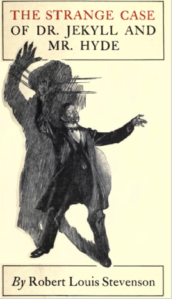A couple of years ago our District lost a dear member who frequently included bits of AA history in his Big Book or Traditions meeting comments. Although this will never take his place, here is some information of people referred to in the Big Book, which some might not know about. Hope you enjoy it.
Professor Langley, Big Book, Chapter 4, Page 51: “Did not Professor Langley’s flying machine go to the bottom of the Potomac River?”
Samuel Pierpont Langley (August 22, 1834 – February 27, 1906) was an American astronomer, physicist, inventor of the bolometer, and aviation pioneer.
Source: Wikipedia
The first attempted flight. Later tests continued until 1903:
“Samuel Pierpont Langley paced impatiently on the deck of a houseboat on May 6, 1896. In a shallow, remote cove on the Potomac River, they watched nervously while workmen made final adjustments to the sixth in a series of experimental steam-powered flying models that Langley called ‘Aerodromes.’ Finally, at 1:10 p.m., with the model’s propellers turning at maximum speed, Langley gave the signal to launch. When the launch lever was pulled, powerful springs catapulted the large model along its 20-foot launching rail. Takeoff!
Instantly, the left forward wing twisted to an acute angle, and the giant dragonfly barrel-rolled into the water with a mighty splash.”
” With money exhausted and public opinion running heavily against him, Langley reluctantly abandoned his quest for powered, manned, heavier-than-air flight. Ironically, nine days after Langley came to that decision, the world’s first successful flights of that kind were performed by Wilbur and Orville Wright”.
Originally published in the July 1998 issue of Aviation History. It was written by C. David Gierke.
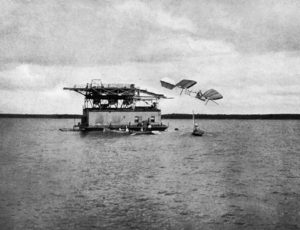
“The cheery voice of an old school friend…”: Ebby Thacher, Big Book, Chapter 1, pages 8 – 12
The following is from Wikipedia:
Edwin Throckmorton Thacher (29 April 1896 – 21 March 1966) (commonly known as Ebby Thacher or Ebby T.) was an old drinking friend and later the sponsor of Alcoholics Anonymous co-founder Bill Wilson. He is credited with introducing Wilson to the initial principles that AA would soon develop, such as “one alcoholic talking to another,” and the Jungian thesis which was passed along to Rowland Hazard and, in turn, to Thacher that alcoholics could recover by a “genuine conversion”.
Thacher was a school friend of Wilson and battled his whole life with alcoholism, frequently landing in mental hospitals or jail. After one bender, three members of The Oxford Group, Rowland Hazard, F. Shepard Cornell, and Cebra Graves, convinced the court to parole Thacher into their custody. Hazard taught Thacher the Oxford Group principles and the idea that conversion was needed between patients. Hazard lodged him in the Calvary Rescue Mission, operated by the Calvary Episcopal Church in New York City.
Beginnings of AA
In November 1934, Thacher had arranged a visit to Wilson’s apartment. Expecting to spend a day drinking and reliving old times, Wilson was instead shocked by Thacher’s refusal to drink. “I’ve got religion,” he reportedly said, to Wilson’s surprise. Thacher told Wilson of his conversion at the Rescue Mission and acquainted Wilson with the teachings of Rowland Hazard about the Oxford Group life-changing program, as well as the prescription of Carl Jung for a conversion.
Wilson at first declined Thacher’s invitation to sobriety and continued to drink in a more restrained way for a short while. After talking with William D. Silkworth, however, he went to Calvary Rescue Mission and underwent a religious conversion; he was then admitted to the Charles B. Towns Hospital for Drug and Alcohol Addiction in New York City on December 11, 1934. Thacher visited him there on December 14 and essentially helped Wilson take what would become Steps Three, Four, Five, Six, Seven, and Eight.
Later life
Wilson stayed sober and eventually formed Alcoholics Anonymous with Bob Smith while Thacher soon returned to drinking.
Wilson always called Thacher his “sponsor,” and even though he had returned to drinking, Wilson looked after his friend’s welfare for the rest of his life. Thacher struggled on and off with sobriety over the years and ultimately died sober in Ballston Spa, New York from emphysema in 1966. He is buried in his family plot at Albany Rural Cemetery in Albany, New York.
Henrietta Seiberling. Although not referenced by name, she can be found in the story, “Dr. Bob’s Nightmare”, as follows:
“About this time a lady called up my wife one Saturday afternoon, saying she wanted me to come over that evening to meet a friend of hers who might help me. It was the day before Mother’s Day and I had come home plastered, carrying a big potted plant which I set down on the table and forthwith went upstairs and passed out. The next day she called again. Wishing to be polite, though I felt very badly, I said, “Let’s make the call,” and extracted from my wife a promise that we would not stay over fifteen minutes.
We entered her house at exactly five o’clock and it was eleven fifteen when we left. I had a couple of shorter talks with this man afterward, and stopped drinking abruptly.“
This episode began in the Akron, OH hotel lobby where Bill stayed after losing a major business opportunity he believed would change his life. On one side of the lobby was the hotel’s bar. On the other a display with the names and phone numbers of various ministers. Sober for a short while, Bill knew working with other alcoholics would keep him sober. From the list, he called a Reverend Tunks, an Oxford Group affiliate who supplied a list of local contacts which included Norman Sheppard, who in turn supplied the name of Henrietta Seiberling.
Bill recognized the “Seiberling” name and was timid about calling. Seiberlings were co-founders of what later became Goodyear Tire Company. He eventually telephoned and discovered that Henrietta was the daughter-in-law of the man known as the “little Napoleon” of the rubber industry. Estranged from her husband, she was living not in their 65 room mansion, but in the estate’s gatehouse.
Henrietta was desperately trying to bring a cure to a rapidly declining local physician. When Bill called he said. “I’m from the Oxford Group and I’m a rum hound from New York.” Henrietta felt Bill’s call was manna from heaven and said to come right out to her house. The meeting with the physician, Dr. Bob Smith, lasted over six hours.
On December 6th, 1979, Henrietta’s New York Times obituary called her “a key figure in the founding and development of Alcoholics Anonymous.” Without her brokering of this vital encounter, history most surely would have followed a different path.
Alcoholic Anonymous Number Three
Bill D. was a well-known Akron, OH attorney and councilman who had been hospitalized for alcoholism seven times in six months before his eighth and last visit on June 26, 1935. He was the third man to join Bill W. in what was to become Alcoholics Anonymous and is the “man on the bed” in the picture hanging on the walls of many AA meeting rooms.
He was visited by Dr. Bob and Bill W. two days following his admission into the hospital. That visit is believed to be AA’s first 12 step call.
Bill D. had not had a drink in over 19 years until his death in 1954. His story, “Alcoholic Anonymous Number Three”, was written by Bill W. and added to the second edition of the Big Book.
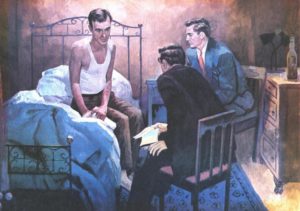
The Hampshire Grenadier (Found in Bill’s Story, page 1 of the Big Book, “Here Lies a Hampshire Grenadier“)
The following comes from the Royal Hampshire Regiment website (Click to View):
Death of Thomas Thetcher, 1764
To members of Alcoholics Anonymous (AA) the name Thomas Thetcher, a grenadier in the North Regiment of the Hants Militia, is synonymous with the foundation of their organization. But the curious link between Thetcher’s grave in the churchyard of Winchester Cathedral and AA is less well known to the wider public.
Thetcher died aged 26 on May 12, 1764, after drinking contaminated ‘small’ beer. He was buried in Winchester Cathedral churchyard with the following inscription on his tombstone:
In Memory of
Thomas Thetcher
a Grenadier in the North Regt.
of Hants Militia, who died of a
violent Fever contracted by drinking
Small Beer when hot the 12th of May
1764. Aged 26 Years.
In grateful remembrance of whose universal goodwill towards his Comrades, this Stone is placed here at their expense, as a small testimony of their regard and concern.
Here sleeps in peace a Hampshire Grenadier,
Who caught his death by drinking cold small Beer,
Soldiers be wise from his untimely fall
And when ye’re hot drink Strong or none at all.
This memorial being decay’d was restor’d
by the Officers of the Garrison AD 1781.
An Honest Soldier never is forgot
Whether he die by Musket or by Pot.
The Stone was replaced by the North Hants Militia when
disembodied at Winchester, on 26 April 1802, in consequence of the
original Stone being destroyed. And again replaced
by The Royal Hampshire Regiment 1966.
In 1918, a young American soldier named Bill Wilson, who was encamped near Winchester with his US Army unit while en route to the Western Front, visited the city’s cathedral and chanced upon Thomas Thetcher’s grave. Wilson was struck by the inscription and also by the similarity between Thetcher’s name and that of a boyhood friend, Ebby Thacher. After the war, Wilson became a successful businessman, but heavy drinking marred his career and he was eventually told that he would either die from his alcoholism or have to be locked up permanently.
Remarkably, however, Wilson and a handful of fellow alcoholics – including Ebby Thacher – discovered a way to achieve sobriety. He became a founding member of Alcoholics Anonymous and wrote a book about his battle with drinking in the hope of inspiring other alcoholics. In it he recalled his visit to Winchester Cathedral and how the gravestone had caught his eye, describing it as an ‘ominous warning which I failed to heed’. Clearly, he had forgotten the part of the inscription which read: ‘When ye’re hot drink Strong or not at all’…
There is no evidence that Thomas Thetcher was an alcoholic. In the mid-18th Century, most people drank small beer – a weak brew – rather than water which carried cholera, typhoid, and other diseases. It is likely that the ‘violent fever’ which killed Thetcher was caused by one of these diseases which had not been killed off in the making of that particular batch of beer. Ironically, had Thetcher drunk ‘strong’ beer, which had a higher alcohol content, he would probably have survived.
The book in which Wilson tells of his visit to Winchester Cathedral – AA’s famous ‘Big Book’ – has sold around 30 million copies. In 2011, Time magazine listed it among the 100 most influential books written in English since 1923. A year later the Library of Congress designated it as one of 88 ‘Books that Shaped America’.
The tombstone that Bill Wilson saw in 1918 was the copy of 1764 original erected in 1802. In 1966 it was moved for safekeeping to the Royal Hampshire Regimental Museum at Serle’s House in Winchester where visitors can still see it. It was replaced in the cathedral grounds by the present updated copy, which is also based on the 1764 original.
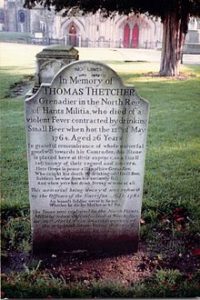
Walter Hagen, from “Bills Story” in the AA Big Book, page 3.
“In 1929 I contracted golf fever. We went at once to the country, my wife to applaud while I started out to overtake Walter Hagen”.
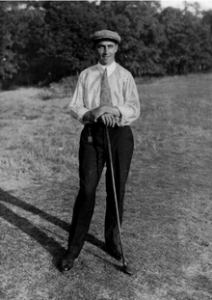
From Wikipedia:
“Walter Charles Hagen (December 21, 1892 – October 6, 1969) was an American professional golfer and a major figure in golf in the first half of the 20th century. His tally of 11 professional majors is third behind Jack Nicklaus (18) and Tiger Woods (15). Hagen is widely considered one of the greatest golfers ever.”
Dr. Jekyll and Mr. Hyde, from the AA Big Book, Chapter 2, page 21
“But what about the real alcoholic? He may start off as a moderate drinker; he may or may not become a continuous hard drinker; but at some stage of his drinking career, he begins to lose all control of his liquor consumption, once he starts to drink.
Here is the fellow who has been puzzling you, especially in his lack of control. He does absurd, incredible, tragic things while drinking. He is a real Dr. Jekyll and Mr. Hyde.”
Dr. Jekyll And Mr. Hyde is the main character in Robert Lewis Stevenson’s 1886 book, “The Strange Case of Dr. Jekyll and Mr. Hyde”, who is a man with two distinct personalities. Dr. Jekyll is a kind and intelligent man that becomes the serial killer, Mr. Henry Hyde when he takes a self-concocted drug serum,
